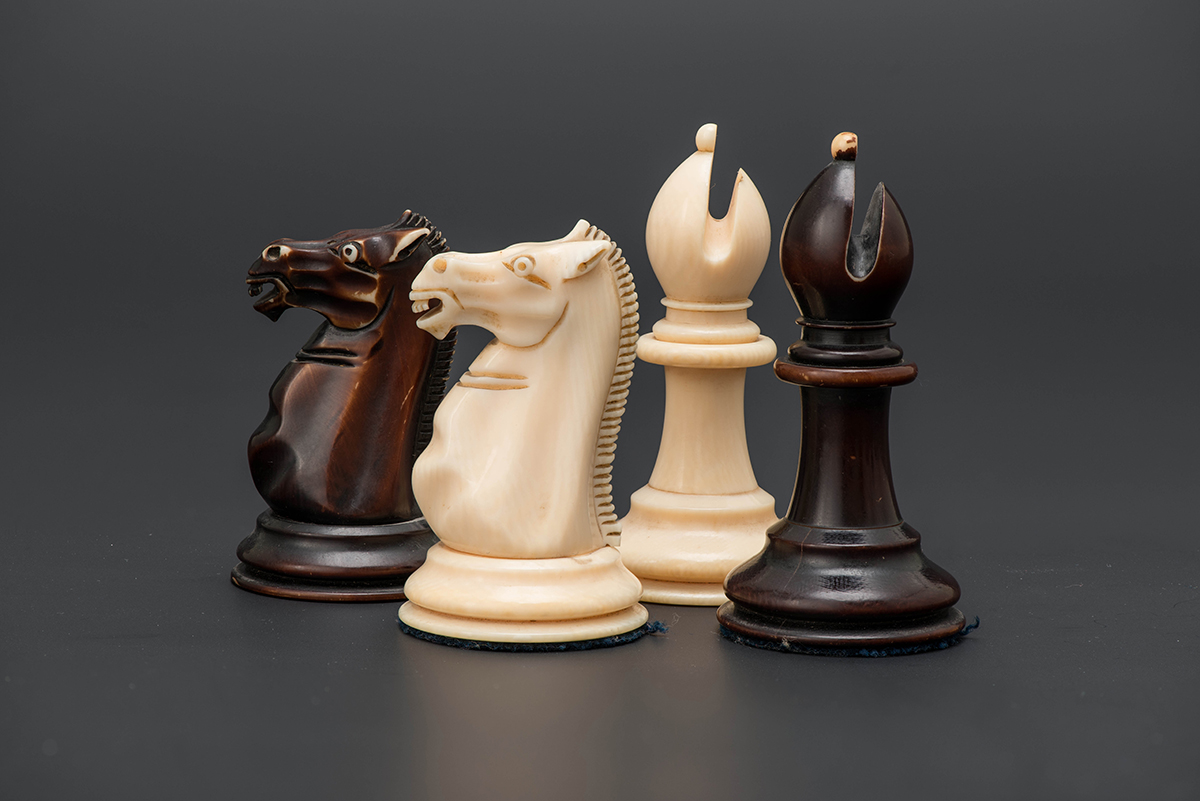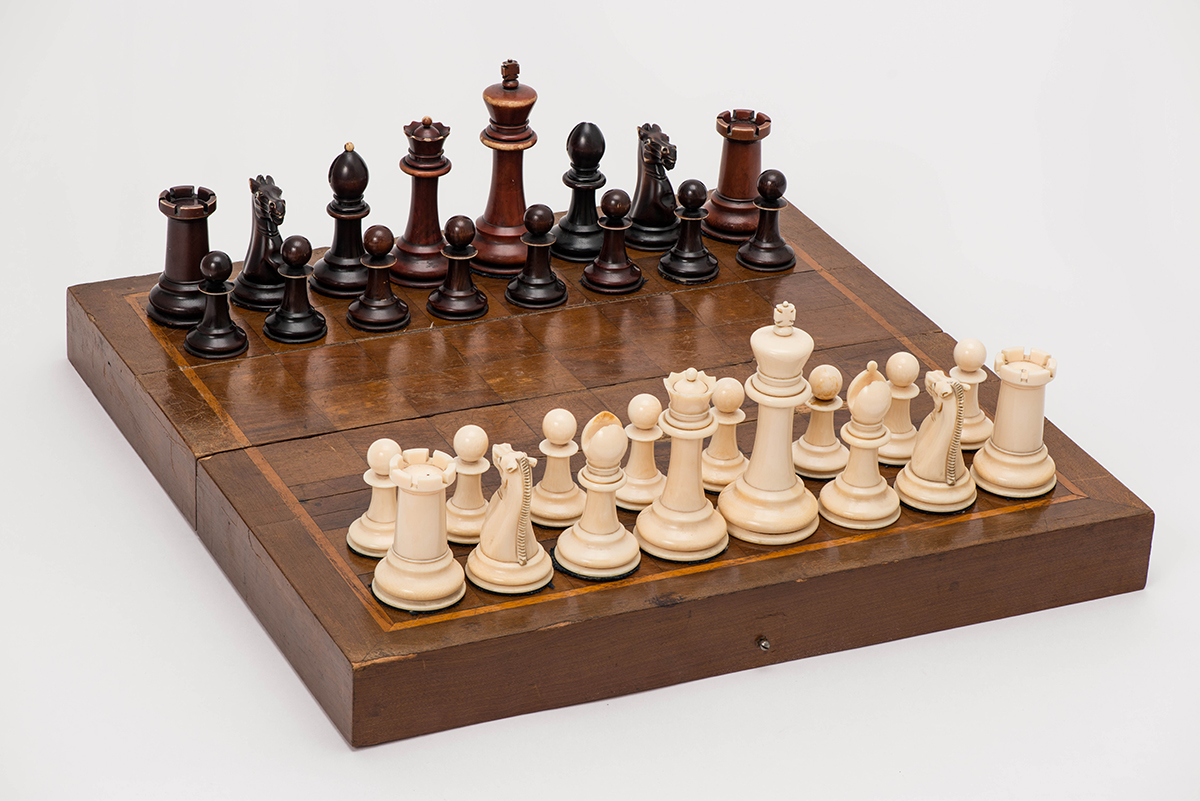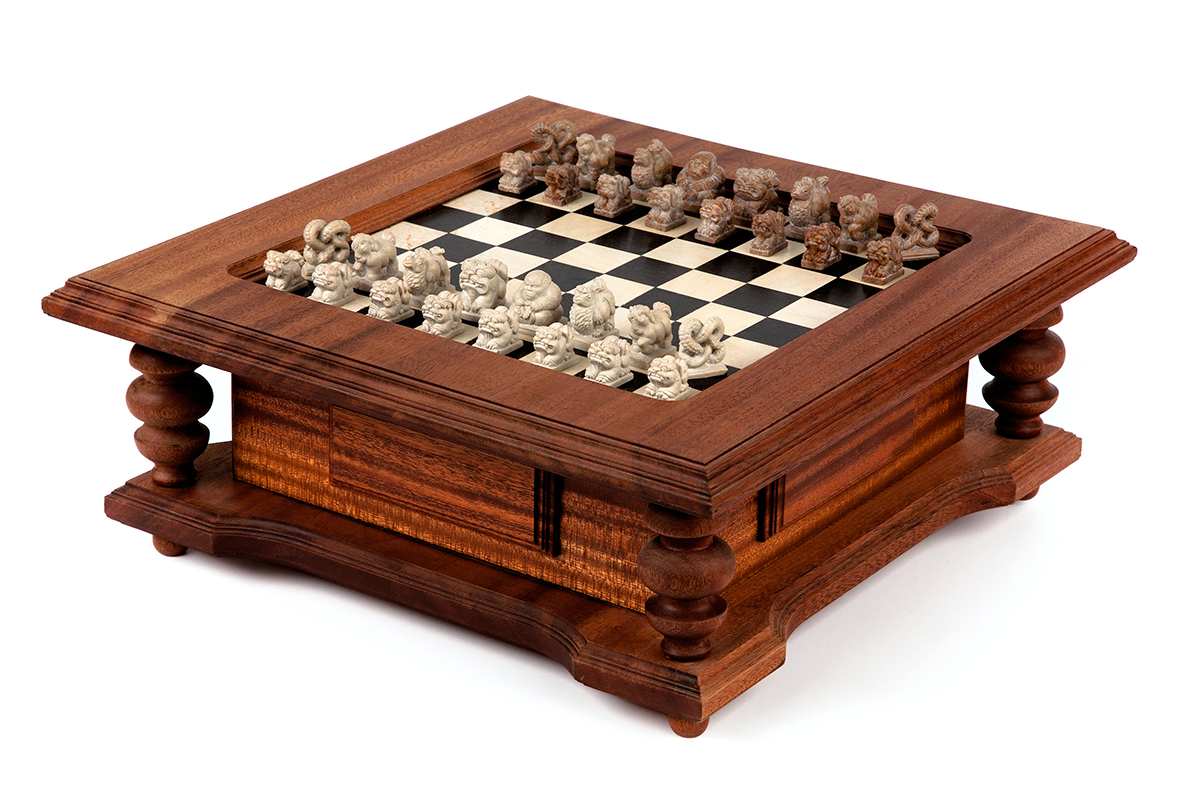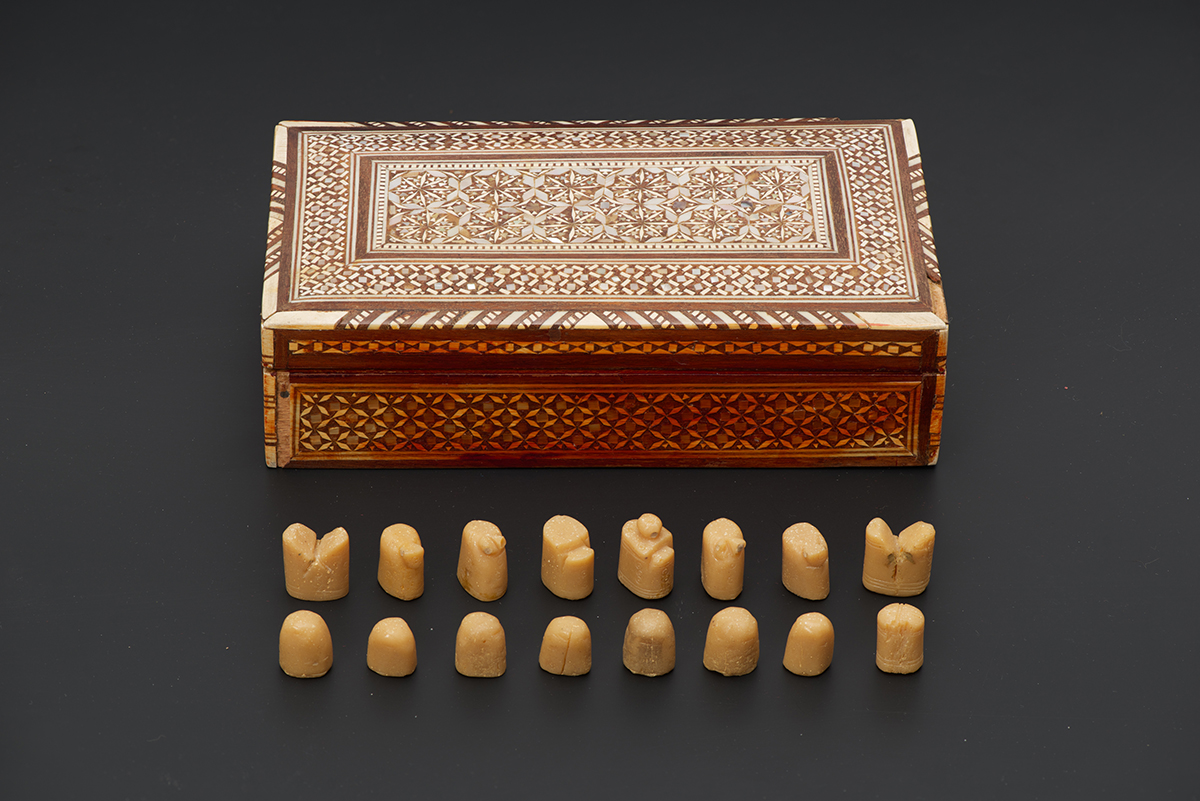Staunton chess set

Period
1950sMaterial
Polymers
Location
Russia, Moscow, Chess Museum of the Central Chess Club
Author
Nathaniel Cook
Category
The GameSubcategory
Chess sets
Curious fact
The knight — a piece represented by a horse whose head was handcarved - had been copied from the ancient Parthenon frieze showcased at the British Museum
This style of chessmen, which has become common in our days, appeared unusual and even provocative when the first set was produced in the middle of the 19th century. Instead of finely carved and delicate pieces that often failed to withstand the excitement of the game, the set offered neat, recognizable and very solid ones. It was beautiful and at the same time suitable for mass production.The set was designed by Nathaniel Cook, while the “uncrowned champion” Howard Staunton “simply” named it after himself. He began to advertise the new product in his newspaper chess column and personally signed the sets’ authenticity labels (red for ivory and green and white for fine wood). Regardless of the material though, the set's peculiar style was immediately recognizable, making Staunton a household name and a common noun. It combines apparent simplicity and discreet luxury of the Victorian England.An impressive trademark feature of a real Staunton is the knight — a piece represented by a horse whose head was handcarved! Cook had copied it from the ancient Parthenon frieze showcased at the British Museum. Over time, imitators of this successful design became so many that nowadays the set, both in its sophisticated and simplified versions, has become quite trivial.Since 1924, Staunton sets have been played during the FIDE tournaments. And polymers came about as a replacement for ivory... Still, there are collectors who remain extremely passionate about the “Rolls Royce of chessmen”, and who religiously collect Staunton chess sets only.




